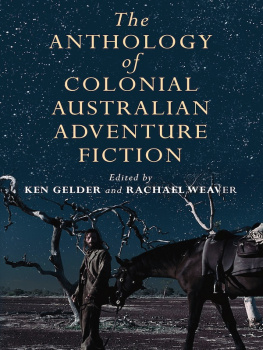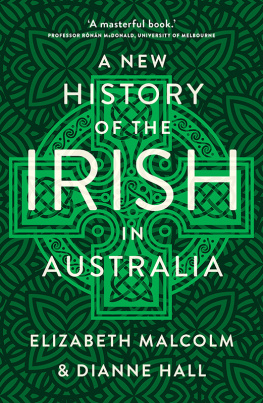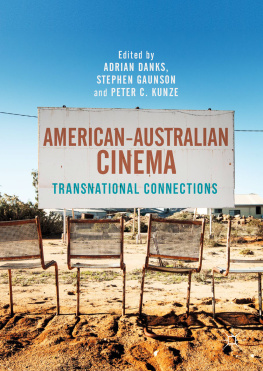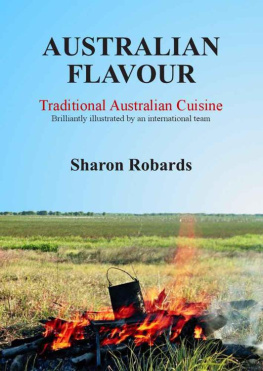INTRODUCTION
The state is invisible [it must be] personified before it can be seen, symbolised before it can be loved, imagined before it can be conceived.
Walzer (1967, p. 191)
The 2001 centenary of Australian Federation celebrations highlighted the roles played by convicts and free settlers in the colonisation of Australia. However, little attention has been given at least by social scientists to other colonial and post-colonial figures and their influence on contemporary Australian identity. The purpose of this book is to address this gap assessing the influence of convicts, free settlers, bushrangers (in particular Ned Kelly), the Anzacs, sporting heroes and the nations other important individuals on Australian identity.
How much influence do historical and popular figures have on the way Australians see themselves in the twenty-first century? To what extent do colonials such as convicts and bushrangers still have an influence upon contemporary Australian identity, and what form does this take? Often viewed as a successful sporting nation, to what extent is Australian identity influenced by the exploits of sporting celebrities, and are those sportspeople predominantly male?
Situated in the field of empirical national identity research, this book explores the influence of colonial and contemporary figures on Australian national identity. It contributes to empirically based Australian literature, where authors have tried to assess various aspects of national identity (e.g. Pakulski & Tranter, 2002, 2000a, 2000b; Jones, 1997; Jones & Smith, 2001; Phillips, 1996, 2000). For example, Jones (1997, p. 291) identified Australian nativism and civic culture, claiming that the former identity type looks backward to a vision of Australia that is fading, while civic culture, a more abstract and open concept, looks forward to a future already in the making. Building upon Jones work, Pakulski and Tranter (2000a, p. 218) suggested that ethno-nationals among other things, stressed the importance of more primordial ties acquired by birth and long residence, the ties that bind us to the ethnically defined and culturally circumscribed nation, whereas civic identity was characterised by the centrality of voluntary ties, interdependence and shared commitments to the core institutions of a society.1 Building upon this empirical tradition, we use survey data to explore the influence of Australian colonial and post-colonial figures.
Earlier related studies based their findings upon survey questions constructed to test abstract notions of national identity, such as civic or nativist identity types (Jones, 1997). Our research relates to historical groups and individuals, and the influence they have on the way contemporary Australians see themselves. We conceptualise a more historically grounded form of national identity than previous researchers in this field of research. Of course, claims of historical influence and collective memory certainly have essentialist elements. For example, some Australians are able to trace their bloodlines directly to the early settlers, convicts, bushrangers and to the Anzacs. Yet if national identity is linked with the various sets of lived relationships in which individuals are engaged (Bradley, 1996, p. 24), we should find that historical groups are associated with certain social and attitudinal dimensions that we can uncover in our survey data.
Smith (1991, p. 14) outlines five features that are common to conceptions of identity at the national level, that relate to the nation. He defines a nation as a named human population sharing an historic territory, common myths and historical memories, a mass, public culture, a common economy and common legal rights and duties for all members. Given that nations are complex and abstract as well as founded on the basis of territorial boundaries, it follows that national identity is also multidimensional, formed from the shared myths, memories and culture. The latter are particularly relevant to our research.
Smith (1996) argues that the inhabitants of many nations claim to be a chosen people, who have arrived in their promise land and at some stage in their history experienced a golden age of heroes, priests and poets. Smiths conception of nationhood provides an important point of departure for this book. The first golden age in Australia recalls a time of convicts, settlers and pioneers, men and women who developed the British colonies in Australia. A second golden age was set more recently during the post-World War II economic boom. The foundation myths of the first golden age connect modern Australians to early colonists, transported convicts, bushrangers and gold rush miners. They form the basis of the colonial and national history and provide an Australian mythscape (Bell, 2003).2 In Australia, the emigrant-colonists and free settlers were the chosen people (Smith, 1999, p. 137) who came mainly from England, Ireland and Scotland (Ward, 1978 [1958], p. 47). These early white Australians subdued the indigenous people and kept at bay external enemies such as the French (Phillips, 1996, p. 116).










